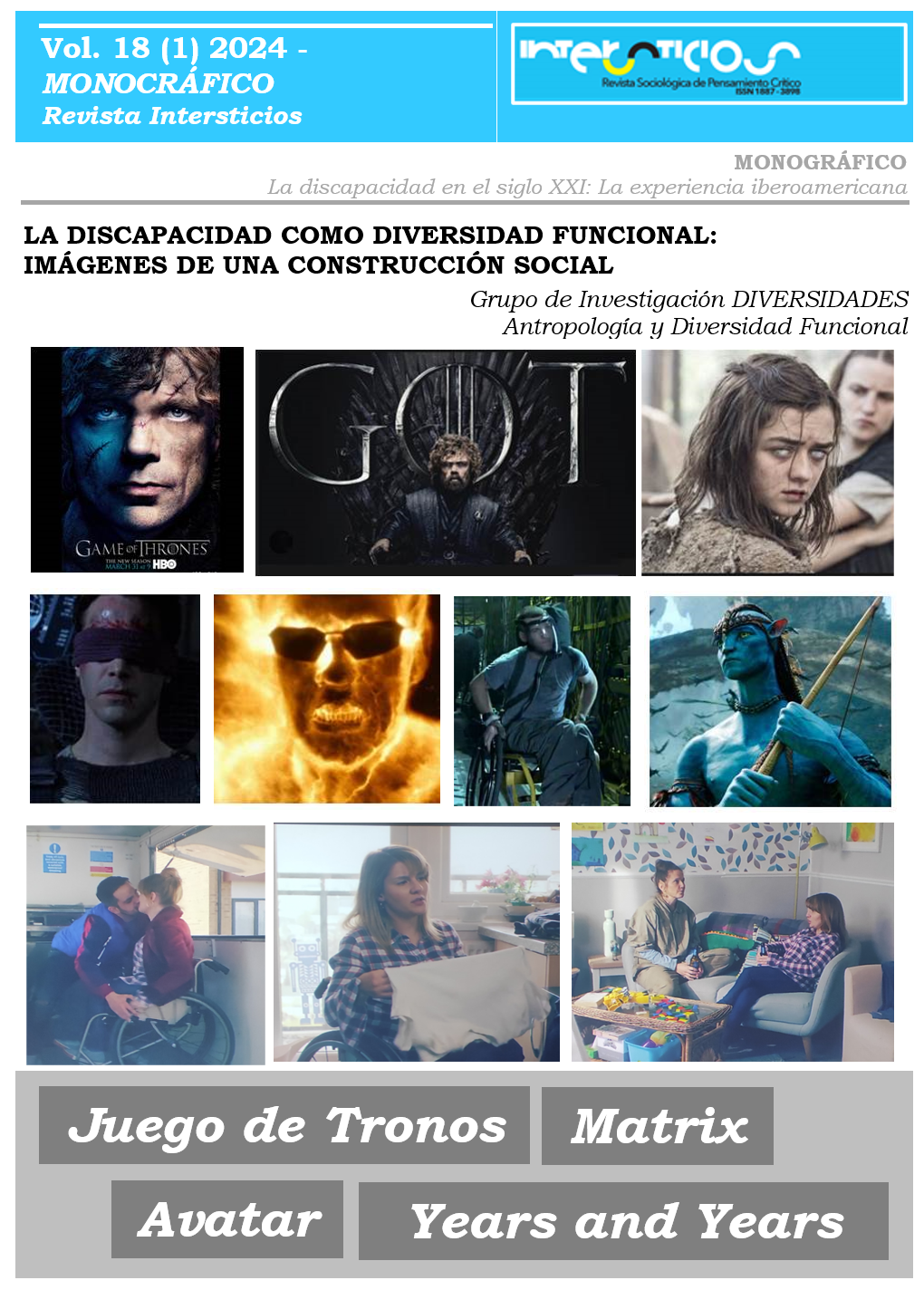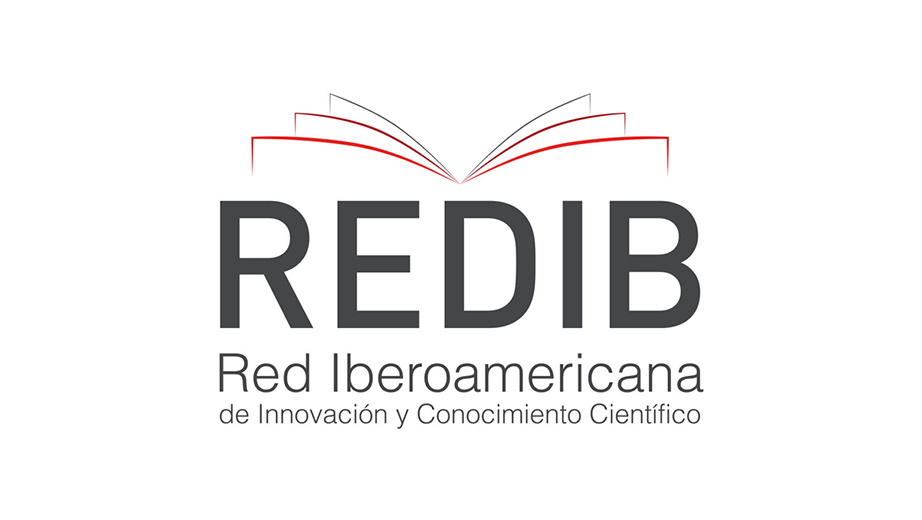Disability as Functional Diversity: Images of a social construction
Keywords:
Images of functional diversity; models of disability; emotions; activism; bioethics.Abstract
The Spanish Independent Living Movement (Movimiento de Vida Independiente) has adopted the concept Functional Diversity (FD) to replace Disability with the intention of pointing out that what configures them as a group has nothing to do with issues related to capacity –since this is a social category which depends on the historical and cultural context– but rather to the barriers to their full social inclusion. Their specific way of existing and acting, their specific way of functioning, has not been considered and, consequently, the real problem is their discrimination. Faced with this discrimination, people with functional diversity (PFD) have been fighting for decades questioning the models from which their vital reality and the very value of their existence are judged.
These models or views on functional diversity articulate the narratives in the fiction series and films. Thus, we may find characters that reproduce the ableist discourse that is so harmful to people with functional diversity; they are quasi-human characters because they lack something to be truly human. At the opposite narrative extreme, we find characters who are beyond human, heroes whose difference can become the only resource when facing very adverse circumstances. Finally, we find –still incipiently– some examples of characters with functional diversity who are simply described as some of the many possibilities of being a human being; in these cases, their diversity is linked to a discourse aligned with the human rights and the intrinsic dignity of every possible human being. We analyze some of these images of the social construction of functional diversity.
References
Aguado, A., y Alcedo, M. A. (1991): «Tratamiento de la discapacidad en la prensa asturiana». Psicothema, 3(1) pp. 175-198.
Aguiar Perera, M. V.; Marchena Gómez, R.; Cuesta Suárez, H. (2014): «Imágenes en la prensa escrita y discapacidad». Comunicación y Pedagogía: nuevas tecnologías y recursos didácticos, 279-280; pp. 43-49
Alegre, 0. M. (2003). La discapacidad en el cine. Santa Cruz de Tenerife, Octaedro.
Aubenque, P. (1999): La prudencia en Aristóteles. Barcelona, Crítica.
Badía Corbella, M. (2010): «La imagen de la discapacidad en el cine¿ Rompiendo estereotipos?». Revista de medicina y cine 6(2); pp. 38-39. https://dialnet.unirioja.es/servlet/articulo?codigo=3672024&orden=300745&info=link
Bourdieu, P. (1991): El sentido práctico. Madrid, Taurus.
Bourdieu, P. (1997): Razones prácticas: sobre la teoría de la acción. Barcelona, Anagrama.
Bourdieu, P. (1999): «El conocimiento por cuerpos», en P. Bourdieu: Meditaciones Pascalianas. Barcelona, Anagrama; pp. 171-214.
Cano Esteban, A.; Ferreira, M. A. V. (2017): «La distopía zombi: ¿una discapacitación generalizada?», en: M. Urraco Solanilla; M. Baelo Álvarez (coords.): Mundos Z: sociologías del género zombi, Madrid, Catarata.
Cassirer, E. (1963): Antropología filosófica: introducción a una filosofía de la cultura. México, Fondo de Cultura Económica.
Celeiro Álvarez, L. (2005): «Literatura e discapacidade», Maremagnum: 9; pp. 61-74. https://dialnet.unirioja.es/servlet/articulo?codigo=3189595
Díaz Balado, A. (2011): «O estigma na discapacidad: reflexo e evolución na literatura e na publicidade». Maremagnum 15: pp. 115-122. https://dialnet.unirioja.es/servlet/articulo?codigo=3778040
Estrada, J. (2003). «El cine y la discapacidad». En Marcha 35; pp. 20-25.
Ferreira, M. A. V.; Cano Esteban, A. (2017): «Pero… ¿qué es un zombi?: todos somos zombies», Nómadas: revista crítica de ciencias sociales y jurídicas 51(2).
Hartwing, S. (2018). Introducción: representar la diversidad. En Checa, J. y Hartwing, S. ¿Discapacidad? Literatura, teatro y cine hispánicos vistos desde los disability studies. 7-24. Berlín et al.: Peter Lang.
Ibáñez, J. (1985): Del algoritmo al sujeto. Madrid, siglo XXI.
Illouz, E. (2012): Intimidades congeladas: las emociones en el capitalismo. Madrid-Buenos Aires, Katz.
Jiménez Acevedo, L. A. (2017): La discapacidad en el cine en . Madrid, Fundación ONCE: https://dialnet.unirioja.es/descarga/libro/699223.pdf
Martínez-Salanova Sánchez, E. (2017) Cine y discapacidad en el cine. Del aislamiento a la inclusión». Making of: cuadernos de cine y educación, pp. 132-133
Monjas, M.; Arranz, F. (2005): L«as personas con discapacidad en el cine», Revista española sobre discapacidad intelectual 36(1), pp. 13-29: https://sid-inico.usal.es/idocs/F8/ART7026/articulos2.pdf
Palacios, A. y Romañach, J. (2006). El modelo de la diversidad. La bioética y los derechos humanos como herramienta para alcanzar la plena dignidad en la FD. Diversitas ediciones.
Peláez, A., Martínez, B., Leonhardt, M. (2009). Maternidad y Discapacidad. Madrid: CERMI y Barclays.
Rodríguez Díaz, S. y Cano Esteban, A. (coords.) (2015): Discapacidad y políticas públicas. La experiencia real de los jóvenes con discapacidad en España. Madrid, Catarata.
Romañach, J. y Lobato, M. (2009). Diversidad Funcional, nuevo término para la lucha por la dignidad en la diversidad del ser humano. (en línea). http://forovidaindependiente.org/diversidad-funcional-nuevo-termino-para-la-lucha-por-la-dignidad-en-la-diversidad-del-ser-humano/
Weber, M. (1993). “Conceptos sociológicos fundamentales”, en M. Weber: Economía y Sociedad: esbozo de una sociología comprensiva. ,Madrid, Fonco de Cultura Económica; pgs. 5-45.

Downloads
Published
Versions
- 2024-08-16 (2)
- 2024-02-08 (1)
Issue
Section
License
Copyright (c) 2024 Susana Rodríguez Díaz, Raquel Sánchez Padilla, Miguel A. V. Ferreira

This work is licensed under a Creative Commons Attribution 4.0 International License.
p class="TEXTO-izquierda">Authors maintain the @copyright, giving to the journal the right of first editio.







